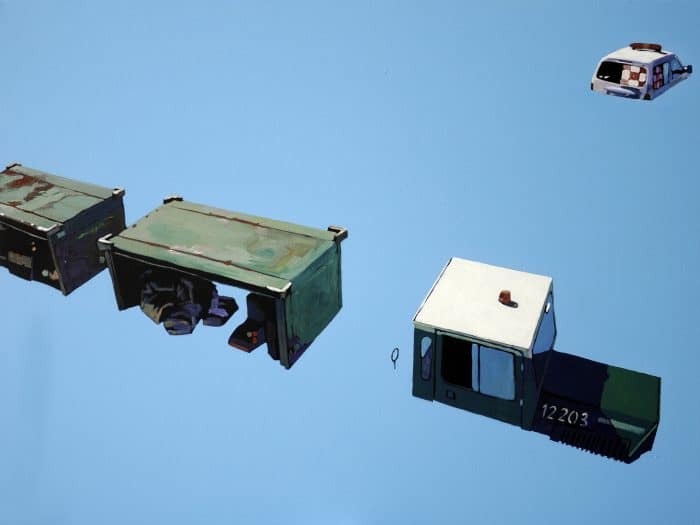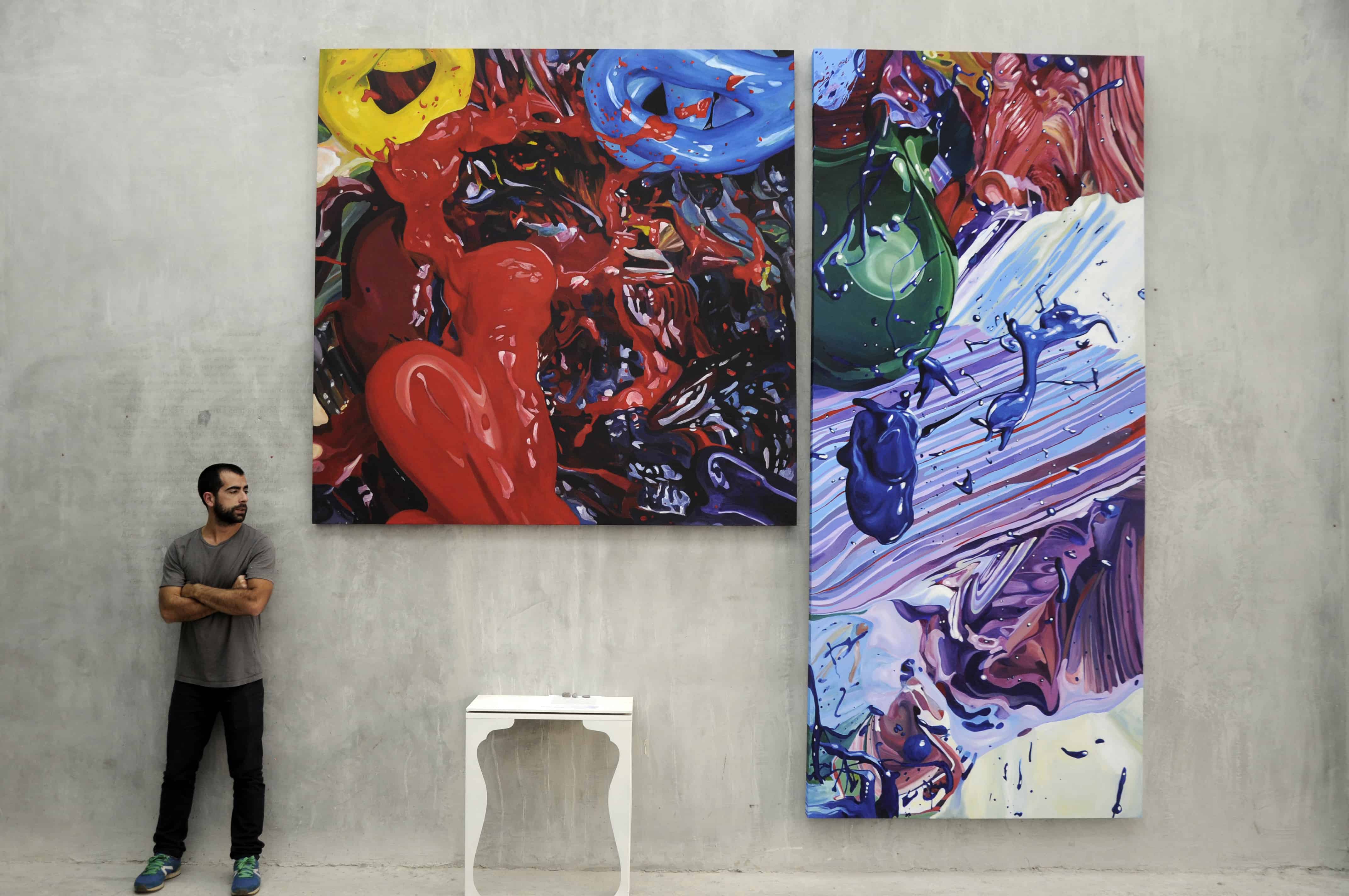Luciano Goizueta’s love for science, self-awareness and art combine in colorful, texturized acrylic works inspired by scientific phenomena. Goizueta studied architecture for six months at the Technology Institute of Costa Rica (TEC) and then graphic design at the University of Costa Rica (UCR), but never finished because illness forced him to spend a significant period of time in isolation. During that time, he began developing his artistic career through painting, photography, and drawing.
At only 34, he has participated in exhibitions in Argentina, Canada, China, the Dominican Republic, Guatemala, Panama, Switzerland and the United States. On a sunny, warm morning, accompanied by the delightful jazz melodies playing in Goizueta’s studio in Escazú, The Tico Times sat down with the artist to chat about his life and work. Excerpts follow.
What do you most like to photograph?
Everything. I’m obsessed with the idea of truly understanding the velocity of time. Usually you think that time’s longer than what it is, because during the present moment, time seems longer, but when you seek the future or the past, it becomes smaller, like a snail. Photography is a way in which I can document that path through that snail. The more information you have, the more possibilities you have to access the past. What I’m most interested in is capturing everything that has to do with the city, but the abandoned city, the uninhabited city. I like to explore the B side of a city: the waste, the things that are left behind such as cars, motorcycles and dumps.
I also like to photograph the things that happen on a daily basis, looking at what your everyday routine was five years ago and how different it is now. It’s that idea that you’ll never get to experiment that precise moment again, and it is composed by a lot of structures that are very temporary. It’s very interesting to see what we take for granted in those paths that we travel in order to get from point A to point B. Right now I’m working on a series called “From A to B,” which is a documentation of the path I travel every day from my house to the studio and backwards at a certain hour. I take photographs of what’s going on in front of me, and afterwards I turn it into a drawing.
How do you choose the theme of each series?
The series’ themes have generally appeared after I’ve worked on a piece. Usually I get interested in something, paint it and then work on it. After that I choose which ones go together. Now I do it more [deliberately]… having an idea and then begin working from that point onward.
Either way, all the ideas you have are linked to one another. Nothing is spontaneous… when you’re interested in something, it’s because there was a path you traveled to reach that place and that moment. From that point on you’ll get immersed in it and dedicate more time to it, and it’ll become more complex. There’s an inevitable natural process.

What do you like to explore on an artistic level within your work?
Everything can be included. I’m very interested in phenomena that maybe are not so related with art. I’m not very interested in being immersed in the art world per se. Of course I’d like to participate in a biennial or in an exhibition, but that’s not where my main focus lies. I’m very interested in science, physics, biology, time and all the different things I want to focus my attention on.
I’ve got all these ideas about the educational formation of a person. Going to school and college is great, but actually switching into the idea of, “OK, I learned all of this and now I’m going to leave it all behind” is not that simple. You’re already impregnated [with that system] and it’s very difficult to get out of it. You’re constantly discovering new things. That’s nothing new. However, it’ll be more yours and in that sense it’s more valuable…. I never studied painting, and I try to avoid the structure of things.
What is your research process?
I research through observation. I often draw everything, and drawing is observing in detail… Lately I’ve been very interested in physics, especially about a self-taught physicist called Nassim Haramein. He has done a lot of physics predictions related with subatomic particles and very complex quantum physics; he has been questioning quantum physics since the beginning. He talks about this idea that physics contemplates the human being within its mathematics… the universe can be understood in the same way as a person or an atom. Haramein has this theory about a fractal universe. What we have are particles with the same complexity, but different sizes. An atom is as complex as the universe, the galaxy and a cell.

How do defragmentation and chaos theory relate to your work?
Decontextualization is something I like to do. I like to take objects out of their context in order to eliminate things and leave an object out of its context. Then, there’s the idea of defragmentation… It’s about a lot of images that get filtered and can create another image, like a collage. Regarding chaos theory, I think the theory is a mere excuse to say that chaos does not exist. What exists are randomness generators based on a lot of information, from factors including climate and the stock exchange. To generate a sense of randomness, it must be completely linked to a structure. Nothing can be random and chaos does not exist…. Order leads to chaos and chaos leads to order. When things are ordered they tend towards disorder, but when things are completely disordered they tend to find a logical order.
Read more Weekend Arts Spotlight interviews here.
Our “Weekend Arts Spotlight” presents Sunday interviews with artists who are from, working in, or inspired by Costa Rica, ranging from writers and actors to dancers and musicians. Do you know of an artist we should consider, whether a long-time favorite or an up-and-comer? Email us at kstanley@ticotimes.net.






